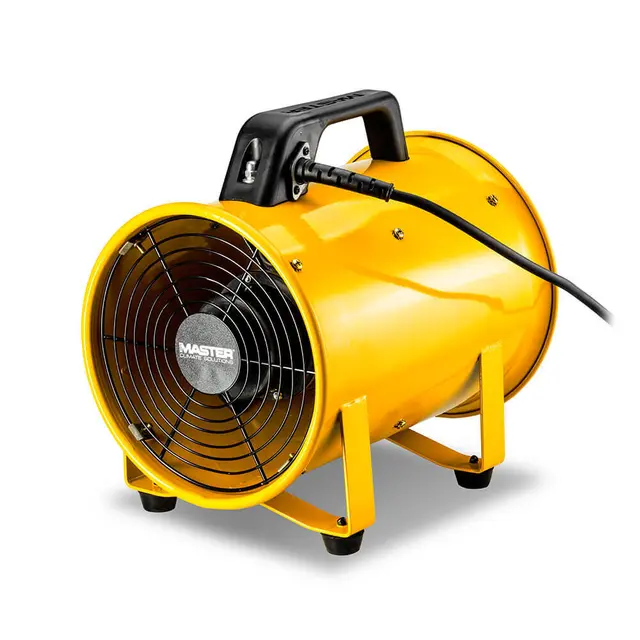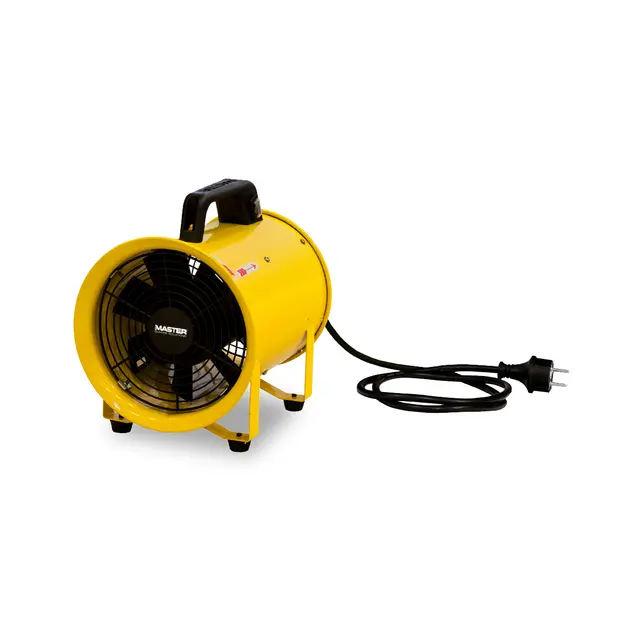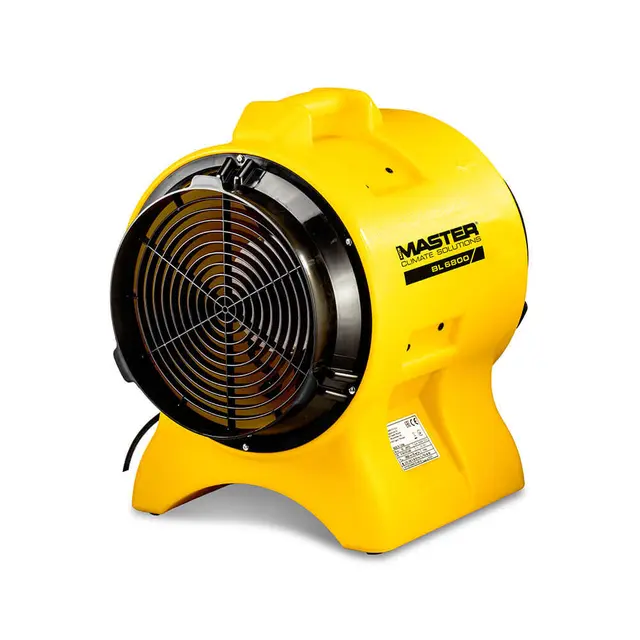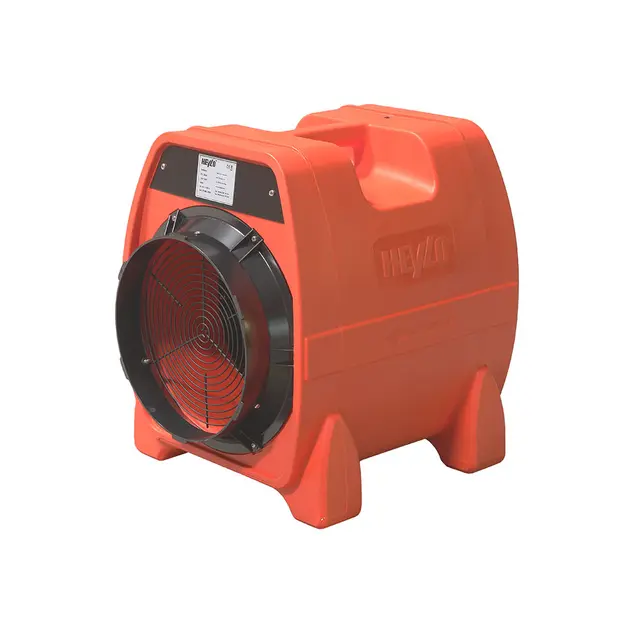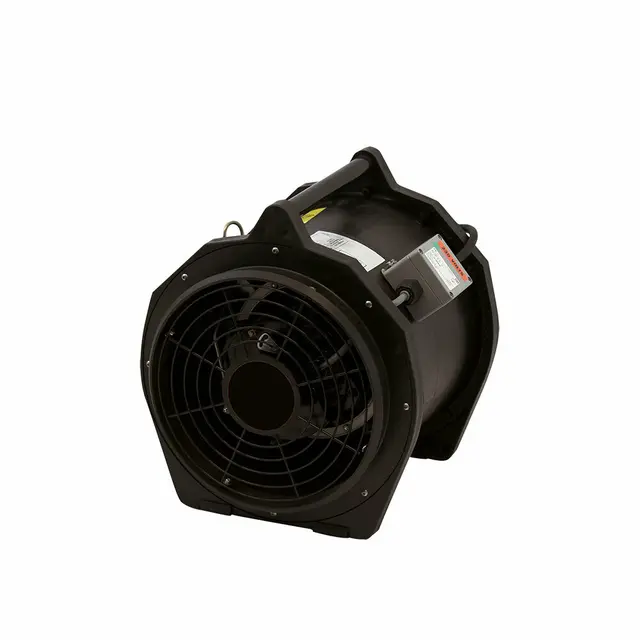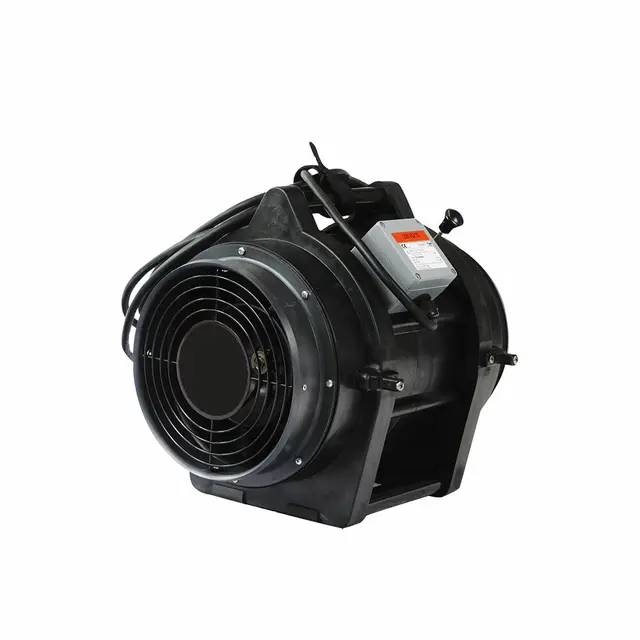How and where to use blowers in professional settings
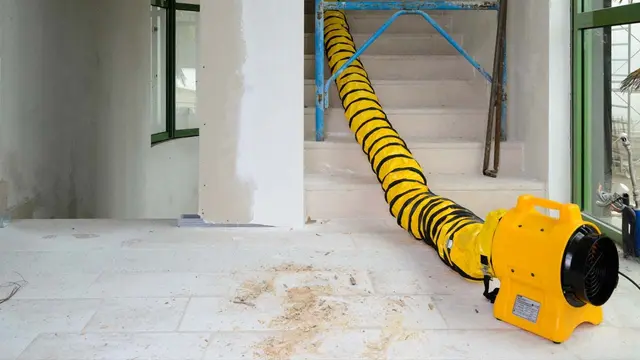
- Home
- Insights
- Ventilation insights
- How and where to use blowers in professional settings
Professional blowers and ventilators are an essential tool for ventilation in building construction work sites and production areas where dust and other airborne particles are present. They can help to maintain air quality, prevent health hazards, and improve overall safety in the work environment. In this article, we will discuss where and how to use professional blowers effectively for building ventilation, areas with dust and more.
Areas of application
Blowers and ventilators are highly useful for a wide range of uses. At construction sites, professional blowers are ideal due to their powerful airflow and ability to quickly clear debris, dust, and other particles from the work area. They are especially useful for tasks such as drying wet surfaces, removing debris from hard-to-reach areas, and cleaning up after construction work. In addition to their practical uses, professional blowers can also improve air quality on construction sites when fitted with dust bags. These bags collect dust and other particles as the blower operates, preventing them from being kicked up into the air and inhaled by workers. This is especially important for workers who may be exposed to hazardous materials such as silica dust.
Roadworks, mines, and tunnels require proper ventilation systems to remove hazardous gases, fumes, and dust particles that may be harmful to workers' health. Blowers and ventilators can create a continuous flow of fresh air and remove the contaminated air, providing a safe working environment.
Building and water damage drying processes are improved and can be concluded faster by applying blowers and ventilators as they help remove humid air faster from the area of application.
Automotive industries often use blowers and ventilators to dry paint on metal surfaces quickly. The powerful air flow produced by these devices helps to speed up the drying process, reducing the time required for painting and finishing.
Firefighters require powerful blowers and ventilators to remove smoke and fumes from the fire scene. These devices help to clear the air and improve visibility, making it easier for firefighters to navigate through the fire and rescue operations.
In the food industry, blowers and ventilators play a critical role in maintaining hygiene and safety. They help to remove moisture, smoke, and odors from the kitchen and baking areas, preventing the growth of harmful bacteria and ensuring a clean and safe working environment.
In bakeries, blowers are essential for maintaining the right temperature and humidity levels in the baking process. These devices help to remove excess moisture and control the temperature, ensuring that the baked goods are of high quality and consistency.
In production halls and storage rooms, blowers and ventilators are a useful tool to maintain proper air circulation and to provide a cooling breeze when temperatures are high.
Usage tips
Before using a professional blower or ventilator, it's important to read the user manual and familiarise yourself with the unit’s features, settings, and safety guidelines. Make sure that you have the necessary power supply, cords, and extension cables.
Here are some tips on how to use professional ventilators and blowers for building ventilation and in areas with dust:
- Choose the right unit for the job: There are different types of blowers and ventilators available, including axial and centrifugal. Choose a blower that is suitable for the size of the work area and the type of ventilation required.
- Position the blower or ventilator correctly: The unit should be placed in a central location to ensure maximum air circulation. It should be positioned away from any obstacles or walls to allow for smooth air flow.
- Direct the airflow appropriately: Depending on the work area, it may be necessary to direct the airflow towards a specific location, such as a dusty corner or a work area where fumes are being generated. Use the adjustable vents or tubes or position the unit appropriately to direct the airflow to where it is needed.
- Maintain blowers regularly: To ensure efficient operation, the units should be maintained regularly. This includes checking the cords and connections and lubricating the motor as necessary.
In conclusion, professional ventilators and blowers are an effective tool for building ventilation and in areas with dust. By following the above tips on how to use them effectively, you can ensure that your work environment is safe, healthy, and free from airborne hazards.
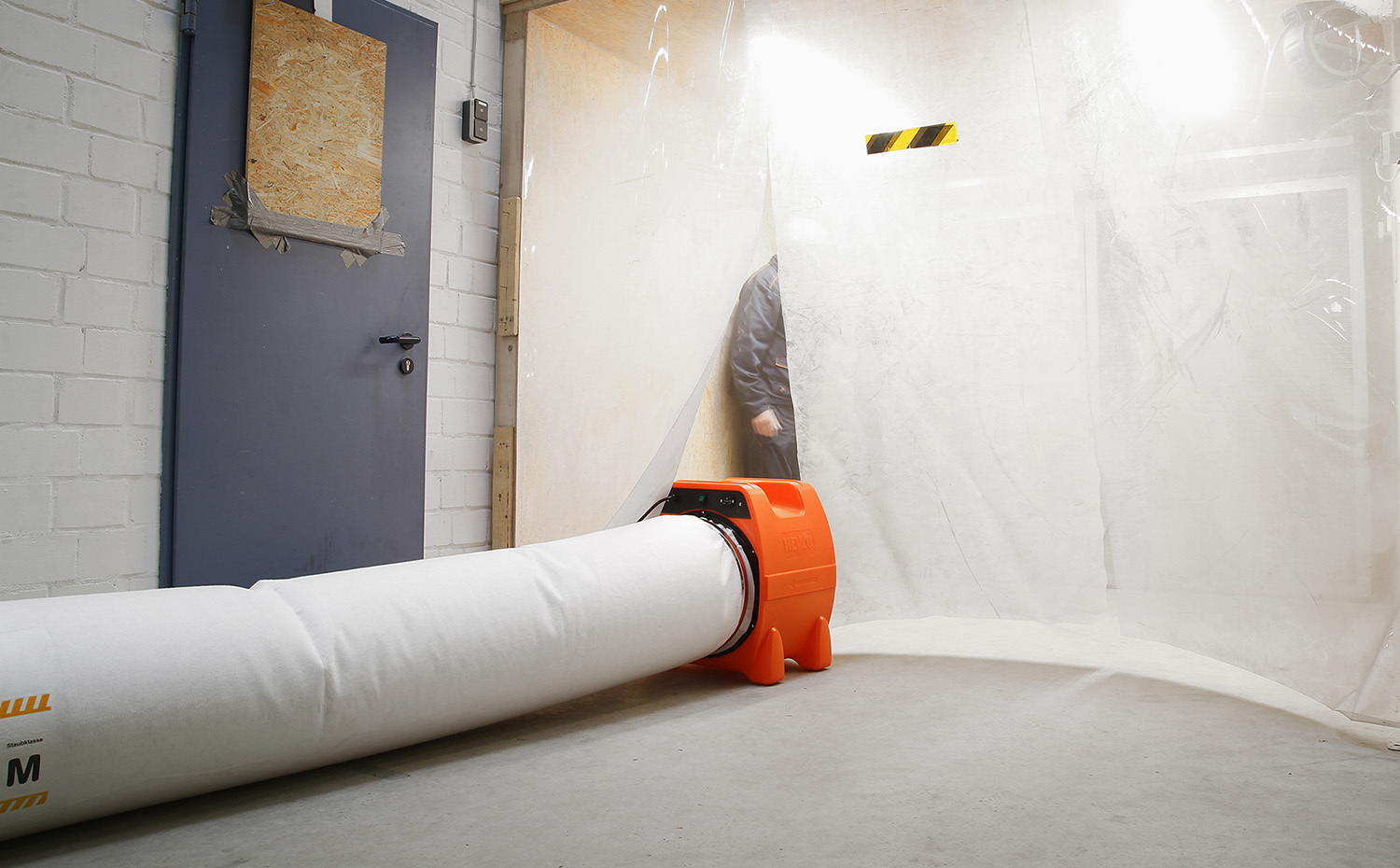
Flex tubes and dust bags add flexibility
Using professional blowers with flex tubes can provide several benefits, especially when used for both sucking and blowing.
Firstly, using flex tubes allows for greater flexibility in directing the airflow. Flex tubes can be bent and maneuvered to reach tight spaces, corners, or areas that are difficult to access. This can be especially useful in construction work sites or production areas where dust and debris can accumulate in hard-to-reach areas.
Secondly, using flex tubes can help to prevent dust and other airborne particles from spreading throughout the work area. By directing the airflow through a flex tube, the dust and particles can be confined to a specific area and then sucked out or blown away. This can help to maintain air quality and reduce health hazards for workers in the area.
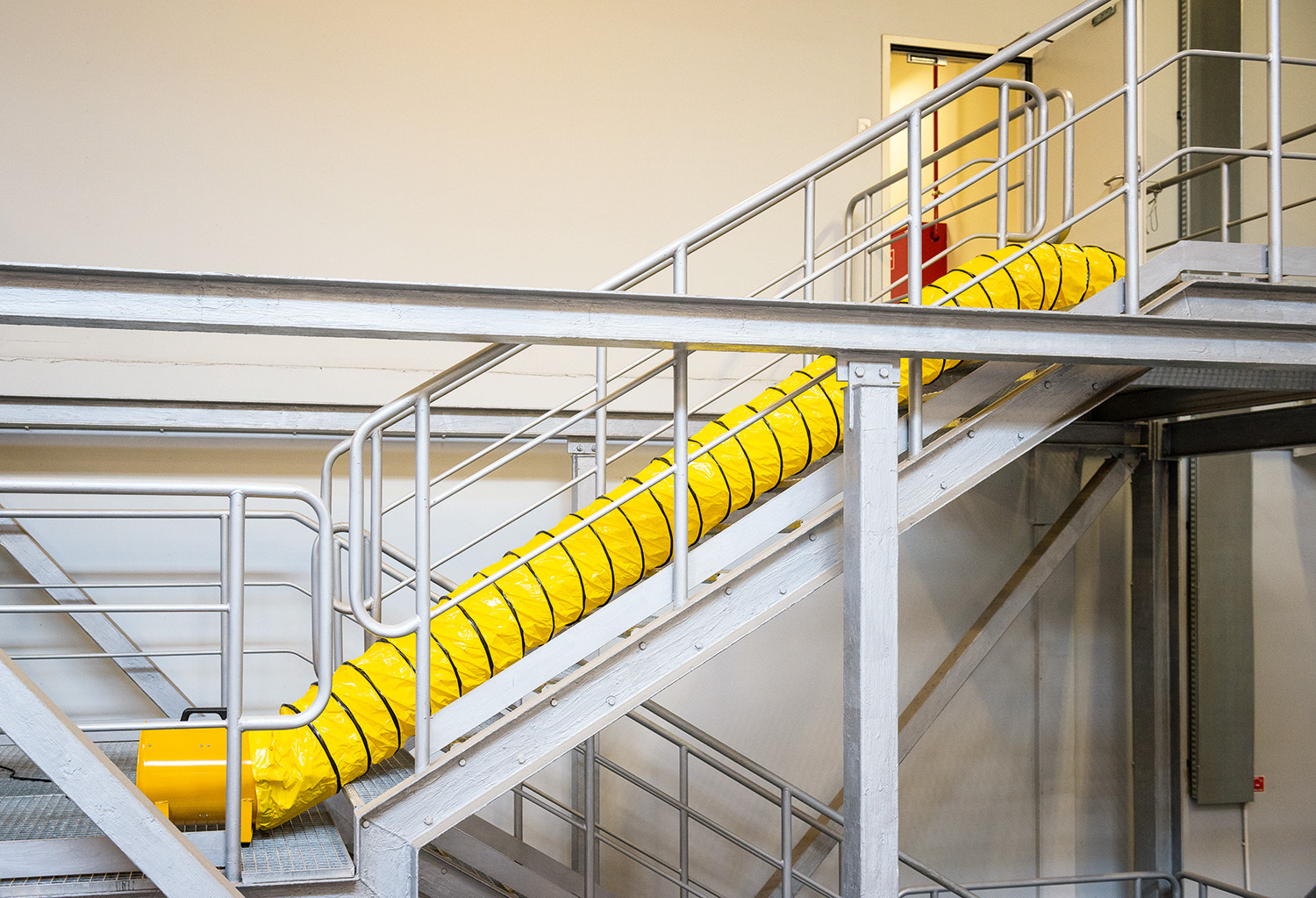
Thirdly, using professional blowers and ventilators for both sucking and blowing can provide a more comprehensive cleaning solution. By switching between the two modes, you can effectively remove dust and debris from surfaces, as well as from the air. This can help to prevent the buildup of dust and debris, which can be a fire hazard or cause respiratory problems. The standard length of flex hoses for our products is 7.6 metres. Our dust bags are 3 metres and can be washed a limited number of times (filter efficiency decreases over time).
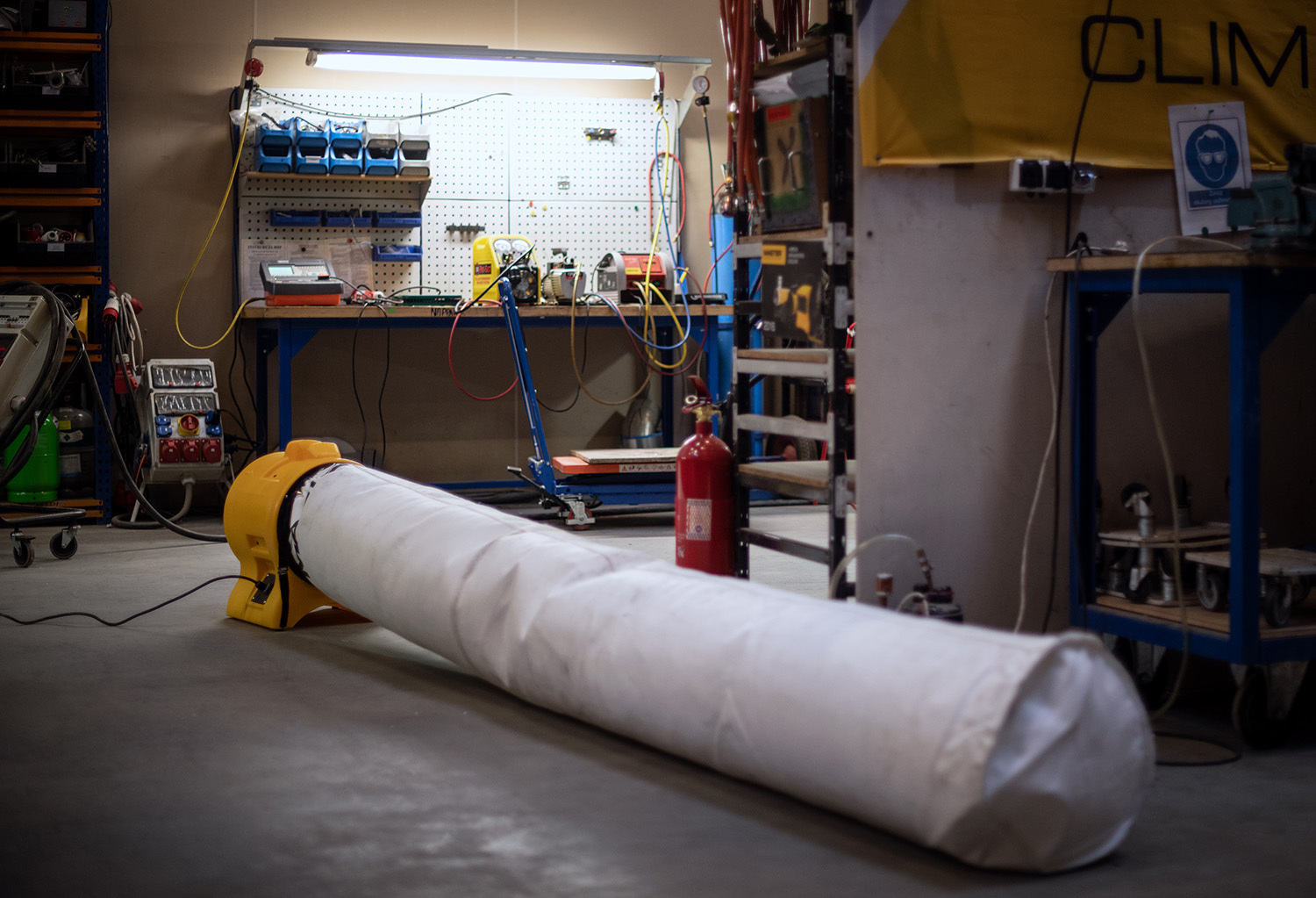
Overall, using professional blowers and ventilators with flex tubes for both sucking and blowing along with dust bags can provide a more effective and efficient solution for ventilation and cleaning in construction work sites and production areas with dust.
Explosion-proof blowers for dangerous substances
ATEX blowers are specialized professional blowers designed for use in environments where explosive gases or dust may be present. ATEX stands for "ATmosphères EXplosibles" and refers to the European Union directive on equipment for use in explosive atmospheres.
ATEX blowers are designed to be explosion-proof and meet strict safety standards to prevent ignition or
combustion of explosive gases or dust. They are commonly used in industries such as oil and gas, mining, chemical, and pharmaceutical manufacturing, where hazardous materials are present. Examples include tank cleaning and providing safe air in dome shafts at petrol stations.
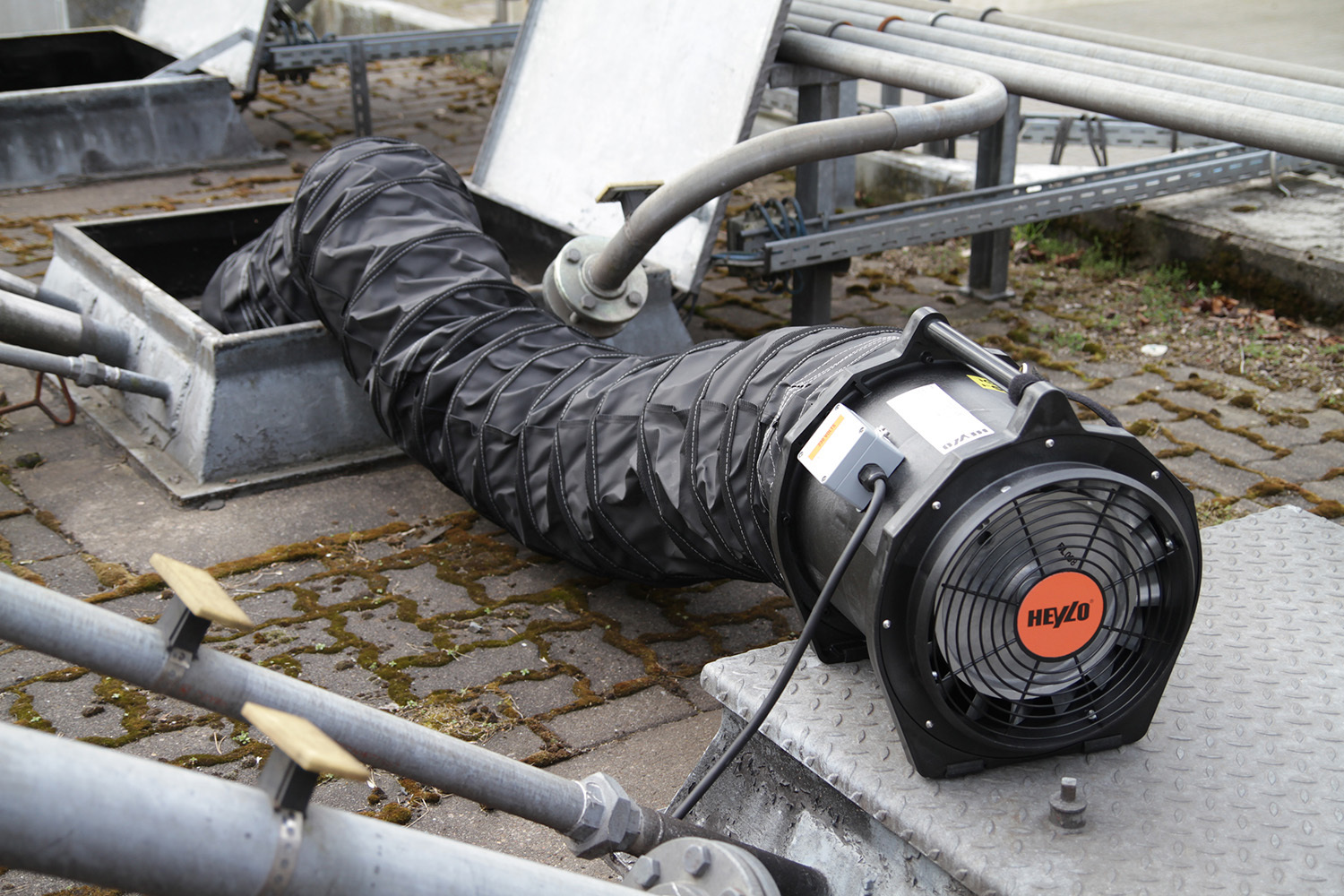
When selecting an ATEX blower, it's important to choose a model that is suitable for the specific hazardous environment. ATEX blowers are classified into different zones based on the likelihood of explosive gases or dust being present, and each zone requires a specific level of protection.
Here are some key features of ATEX blowers:
- Explosion-proof housing: ATEX blowers are designed with a housing that is explosion-proof and can contain any sparks or flames that may occur. The housing is typically made of a durable material such as aluminum or stainless steel.
- Specialised motor: The motor in an ATEX blower is designed to prevent sparking or overheating, which could lead to an explosion. The motor is typically enclosed in a protective housing to prevent any sparks or flames from escaping.
- Non-sparking blades: The blades in an ATEX blower are made of non-sparking material, such as aluminum or brass, to prevent any sparks from occurring during operation.
- Sealed electrical components: All electrical components in an ATEX blower are sealed to prevent any sparks or flames from escaping.
- Grounding: A grounding wire is often included with ATEX blowers to ensure that any static electricity is safely discharged.
ATEX blowers are an essential tool for ventilation and extraction of dangerous gases in hazardous environments. They provide a high level of safety and can help prevent potentially catastrophic explosions or fires. When using ATEX blowers, it's important to follow all safety guidelines and ensure that they are used correctly and maintained regularly to ensure their effectiveness and safety.

Dantherm Group is one of Europe’s foremost providers of efficient, sustainable and durable portable blowers. Built to perform and designed to last our vast range of products accommodate any need.
It is not just our high-quality blowers and ventilators that embody these core values – it is also evident in our broad range of accessories, as well as our after-sales service.
For more information about our efficient blowers and ventilators, get in touch using the contact form below.
Related products
Featured insights

Beat the heat with professional fans and coolers
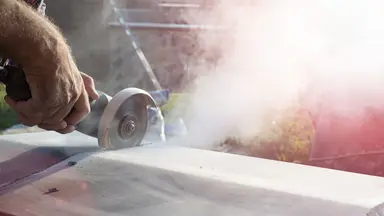
Removing the risk of dust during building work and renovations
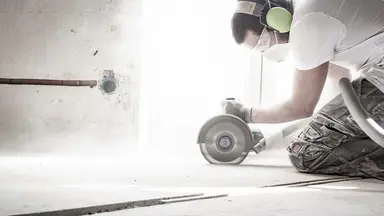
Creating healthy, clean air on construction sites.
Need help with choosing the right solution? Our team of over 100 climate control experts can assist.
You can also reach out or join the discussion on our Social Media. Check out our LinkedIn page.
